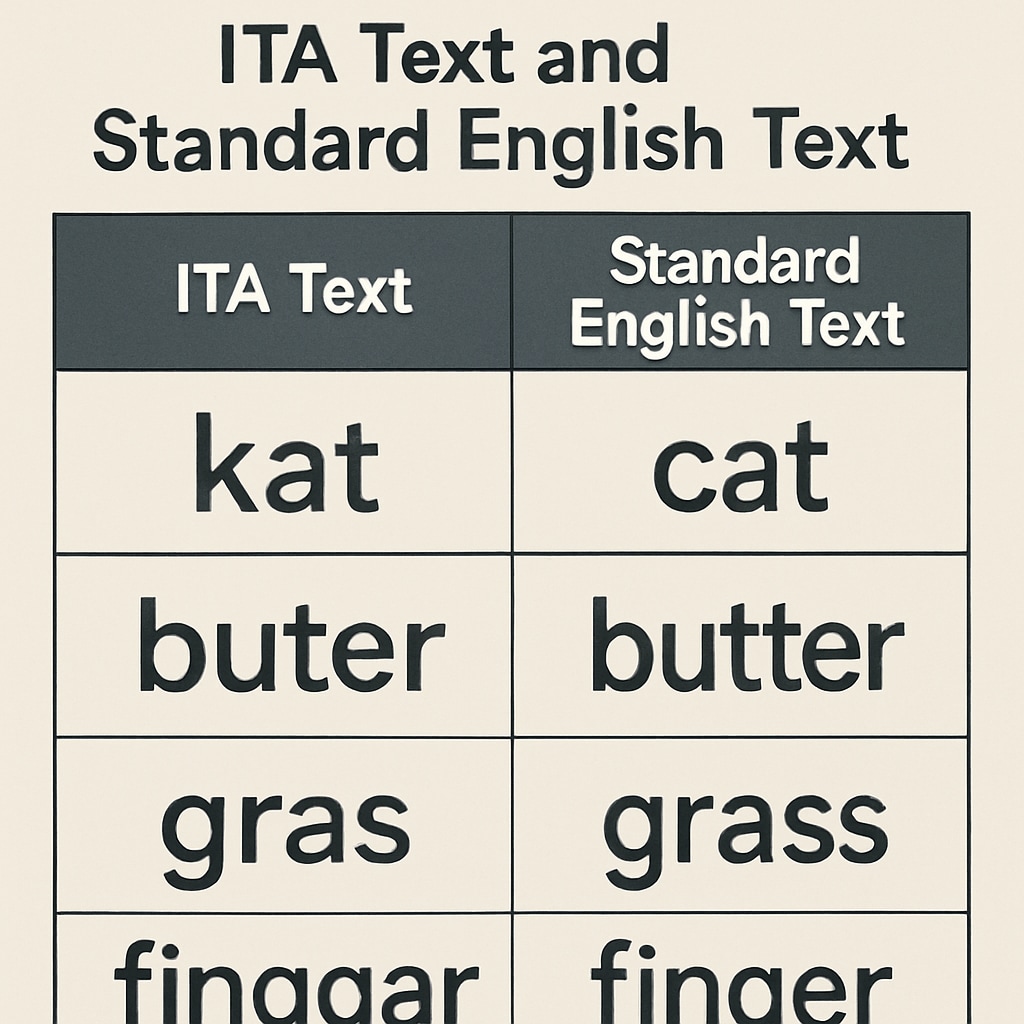The ITA (Initial Teaching Alphabet), introduced as an experimental teaching method in the 1970s, aimed to simplify reading for young learners. While this method initially succeeded in helping children decode written language quickly, it inadvertently contributed to lifelong spelling challenges for many students. This article examines the long-term consequences of ITA, focusing on how its design—supposedly an innovation in early education—created persistent challenges for spelling in adulthood.
What Was ITA and Why Was It Introduced?
The Initial Teaching Alphabet (ITA) was developed in the 1960s by Sir James Pitman, a British educator, as a phonetic-based system to aid young learners in mastering reading. Instead of adhering to the complexities of traditional English spelling, ITA used a simplified, phonetic alphabet comprising 44 symbols, each closely aligned with English sounds. This approach aimed to eliminate the confusion caused by irregular spelling patterns in English.
Educational theorists believed that ITA could accelerate reading proficiency by removing the barriers of traditional orthography. As a result, the method gained significant traction in the 1970s, particularly in the United Kingdom and the United States. However, while ITA made early reading easier, it unintentionally disrupted the transition to standard English spelling, leading to long-term difficulties for many students.

The Unintended Consequences: ITA and Spelling Challenges
While ITA achieved its primary goal of helping children decode language faster, its secondary effects were far-reaching and problematic. After transitioning from ITA to standard English, many learners found it challenging to adapt to the inconsistencies of traditional spelling. This was due to several factors:
- Over-reliance on phonetics: ITA taught students to associate specific sounds with unique symbols, making the irregular spelling of standard English harder to grasp later on.
- Delayed exposure to traditional spelling: The extended use of ITA meant that students were introduced to standard English orthography later than their peers, causing gaps in their spelling competence.
- Cognitive confusion: Switching from ITA to standard spelling created cognitive dissonance as learners grappled with two conflicting systems.
As a result, many students who learned under the ITA system reported lifelong struggles with spelling, even in adulthood. These challenges were not limited to academic settings but extended into professional and personal realms as well.

Why ITA Fell Out of Favor
By the late 1970s, educators began to recognize the limitations and unintended consequences of the ITA method. Critics highlighted how the system’s initial benefits were outweighed by its long-term drawbacks, particularly in spelling proficiency. Research indicated that students taught using ITA often lagged behind their peers in mastering standard English orthography, prompting schools to abandon the method.
Moreover, advancements in literacy education shifted the focus toward balanced approaches that incorporated phonics, whole language, and other evidence-based methods. These newer strategies aimed to build foundational reading skills without sacrificing long-term spelling competence.
The Legacy of ITA: Lifelong Implications
Although ITA is no longer widely used, its legacy persists in the struggles of those who were taught under the system. For many adults, the experience of learning through ITA resulted in a lifelong battle with spelling inconsistencies. This highlights the importance of considering the long-term implications of educational experiments before their widespread implementation.
Modern educators can learn valuable lessons from the ITA era. While innovation in teaching methods is crucial, it must be balanced with a careful evaluation of potential unintended consequences. By doing so, educators can ensure that experimental approaches truly benefit learners in both the short and long term.
For further reading, explore the Initial Teaching Alphabet on Wikipedia or this analysis of literacy teaching methods on Britannica.
Readability guidance: The article uses a clear structure with short paragraphs and lists to enhance readability. Overly complex sentences and passive voice are minimized to ensure accessibility for a broad audience.


